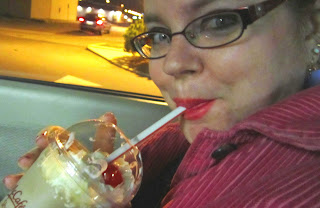 |
| photo by JBP c 2000 |
Some of my earliest memories are: shifting through the grass with my hand, following the ants and other small bugs crawling through the thatchwork at the base of the lawn; putting my face into red flower; playing with the garden snails after the Southern California rain brought them out in droves, giggling as they reacted to touch and breath; looking in Pacific tide pools filled with wondous diversity affected by every wave.
From the forest to the desert, from the ocean to the lakes, to the rivers, to the mountains, to the caves, I am truly blessed to live in a land rich in diverse natural beauty and a country with a rich history of those who care enough to help the future generations experience the same awe and wonder of nature.
It is in this love of God's creation that my love of photography emerges and extends to the interface of human creations and natural wonders, to the purely human creative urge from which all forms of art and expression find their beginnings and fruition.
But we have found out, after the industrial revolution of the 19th and early 20th Centuries, that our creative ability can have a devastating and polluting effect, poisoning the very elements of the natural and living world we need for any quality of human existence. By the mid-20th Century, the damage we can inflict became painfully obvious to those who followed in the footsteps of John Muir and Teddy Roosevelt. The loss of the passenger pigeon through excessive hunting became a poignant example, among a growing supply of examples, that rang an alarm of an inter-connected and inter-dependent dying that would lead to our own human destruction.
Earth Day emerged as a single day every year for the remembrance of the beauty of creation and a call to action for every human being.
Litter and trash thrown along the roads and walkways, choked the scenic beauty of even the most rural parts of America, the Beautiful. I remember the early Earth Day "celebrations" as days for picking up litter and trash. Now we have whole municipalities, states and nations dedicated to recycling as much as possible. In most places in America, there are laws that prohibit littering and encourage recycling.
In the 21st Century, the beauty and awesomeness of the natural world can be found in the densest of urban communities where parks and trees are demanded by citizens for quality of life. It can be found in the great expanses and wondrous scenic opportunities of national and state parks. Their protection and accessibility paid for by citizens through taxes, and encouraged by a clear conscience of voters, ensuring future generations and future centuries can bear witness to the natural world as we can today, one of the many Earth Days worth remembering.
 |
| photo by JBP c 2012 |
+ + +
For more information about Earth Day:
Earth Day: The History of A Movement
http://www.earthday.org/earth-day-history-movement
Some of Wisconsin heroes have been given special recognition:
Wisconsin Conservation Hall of Fame
http://wchf.org/
Over 70 Hall of Fame Inductees: Wisconsin has historically pioneered new concepts and ideas. A number of progressive steps toward the conservation of natural resources have originated in Wisconsin, including: the first rural zoning law in the U.S., the first pilot soil conservation demonstration project in the U.S., the first general conservation curriculum, and the first bond issue for outdoor recreation.




